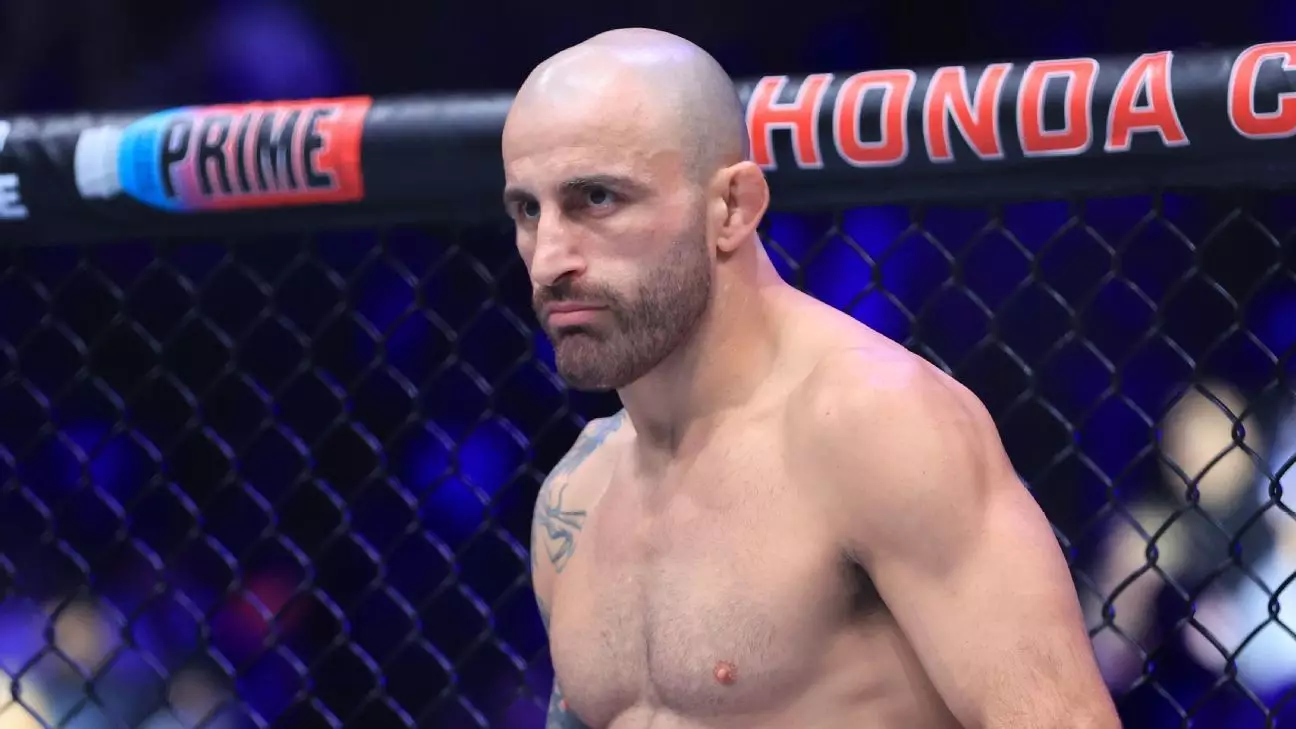The recent decision by UFC featherweight champion Ilia Topuria to vacate his title and transition to the lightweight division has sent shockwaves through both weight classes. The implications of his departure stretch far beyond just the championship; they have created a cascade of questions regarding the direction of both divisions. While Topuria’s bold move might open new avenues for contenders within the lightweight category, it undeniably leaves featherweight in a state of flux, necessitating a thorough examination of what lies ahead for both weight classes.
At lightweight, the central issue revolves around whether Topuria will receive an immediate title shot or if he will need to contest against another contender to earn that coveted opportunity. Topuria himself suggested in a press conference that the UFC management promised him a title bout, but the organization has yet to make any formal announcements regarding his next fight or the forthcoming title match for current champion Islam Makhachev. A stable of contenders awaits, including former champions like Charles Oliveira and Justin Gaethje, along with rising stars eager to seize their moment in the spotlight. Makhachev’s own ambitions to move up to welterweight introduce yet another layer of complexity that adds to the uncertainty of title prospects in the division.
Volkanovski’s Uphill Battle
Turning our gaze to the featherweight landscape, the most straightforward resolution seems to hinge on former champion Alexander Volkanovski, who is poised to face Diego Lopes in an anticipated championship bout at UFC 314. Volkanovski’s career has been characterized by dominance, yet recent setbacks have cast doubt on his position. At 36, he’s suffered back-to-back knockouts and has openly discussed mental health struggles affecting his performance. Such vulnerability makes this fight pivotal for Volkanovski, who is striving to rekindle a legacy that once seemed invulnerable.
What’s interesting is that Volkanovski acknowledges the heightened scrutiny surrounding him. He is aware that fans are anxious about his future after such turbulent performances. Yet, he is fiercely determined to reassert himself in the octagon, stating, “I want to prove I can beat this new school [of fighters].” This undercurrent of defiance suggests there’s still a fire burning within him, and his desire to reclaim his status reflects both the emotional weight and competitive edge he brings into the fight. The outcome against Lopes could very well dictate the trajectory of the featherweight division.
Contenders Emerge from the Shadows
Alongside Volkanovski and Lopes, several other fighters are eager to capitalize on the changing dynamics at featherweight. One such contender is Movsar Evloev, a fighter boasting an impressive undefeated record of 19-0. His grappling-heavy fighting style has garnered attention, but questions linger about his marketability as a future champion. UFC CEO Dana White’s reference to one of Evloev’s matches as “the least fun fight anybody’s ever seen” highlights an underlying concern: can Evloev effectively capture the audience’s imagination while maintaining his stellar record?
Yet, Evloev’s path remains cluttered. His previous victory against Lopes indicates he will likely have more opportunities to surface as a title contender, but his style leaves fans and promoters wanting. The UFC thrives on electric performances, and Evloev needs to prove he can deliver that in upcoming fights to push through the veil of anonymity that enshrouds him.
New Blood and Potential Disruptors
As the dust settles from Topuria’s departure, another intriguing subplot is emerging with the arrival of Aaron Pico, a former Bellator prospect with immense promise. After a rocky start in his career, Pico has recently regained his footing, showcasing skills that suggest he could very well become a formidable player in the UFC. His transition to the organization is being watched closely, as the potential for him to disrupt established hierarchies in the featherweight division is palpable.
Moreover, rising talents such as Jean Silva are making their mark in quick succession. Silva’s rapid turnaround to face Bryce Mitchell exemplifies the urgency and competitiveness that defines the current era of featherweight fighters. In addition to Silva, fighters like Youssef Zalal and Lerone Murphy are quietly amassing impressive win streaks, leading to the possibility of creating significant waves at the top of the division. This influx of new talent introduces an exciting unpredictability to the featherweight landscape, as traditional names face a growing challenge from a younger, more dynamic cohort of fighters.
With both divisions in a state of flux, the thrill of uncertainty also presents a prime opportunity for fresh faces to shine. In an ever-evolving sport like MMA, where no fighter is truly safe from the tides of change, the time is ripe for the unheralded to step into the spotlight and challenge the established hierarchy. Where will the chips fall? The forthcoming events will be essential in unraveling this intricate web of talent and ambition in the UFC lightweight and featherweight divisions.


Leave a Reply